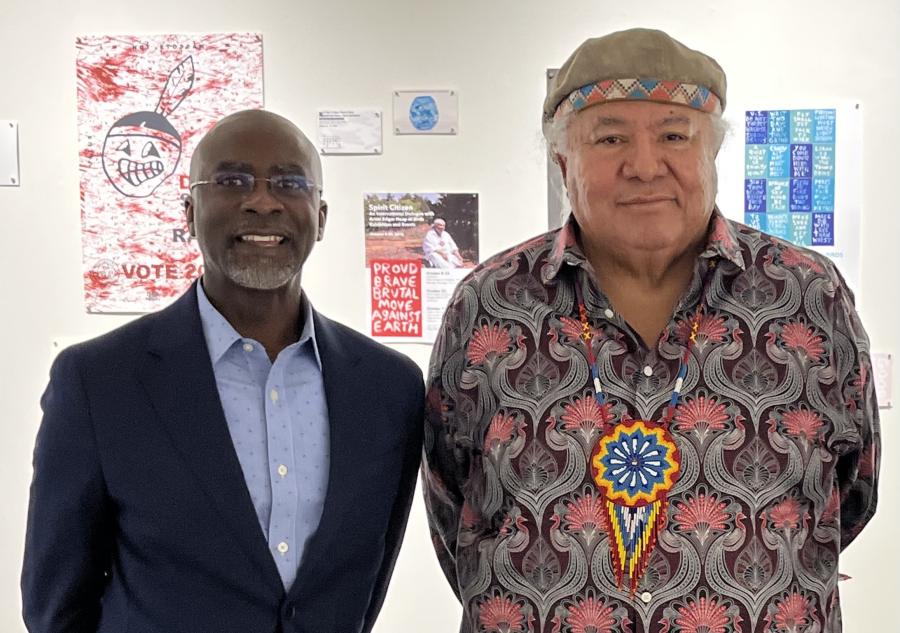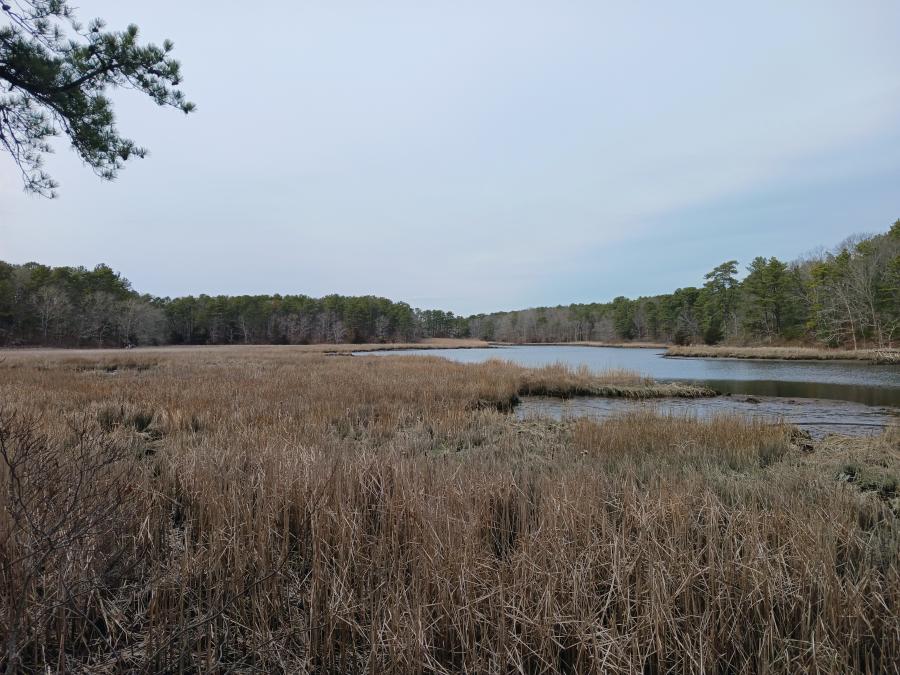The Lakota language in South Dakota is currently facing a process of attrition similar to that of many native languages around the world. The older generation still consists of fluent first language speakers and commonly extends to 40- and 50-year-olds, while the younger generations can typically understand but no longer speak fluently. Many of today's youth and children can barely understand, and they speak very little or no Lakota. Lakota is not cool. It has been replaced by English, the language of multi-media and of modern life.
Joshua Fishman argues in his numerous publications that any declining language can be saved only if it reemerges in its native communities as the mother tongue. Surviving speakers need to discipline themselves to the point of conversing with their children exclusively in the language to allow young people to acquire it largely unconsciously and automatically. They should aim to conduct all daily communication in the language.
As regards the formal educational system, it is best to immerse children as early as preschool in the target language for as many hours as possible. Spontaneous language acquisition usually stops around puberty; in later years, students require increasingly analytical instruction supported by grammar. Language learning then becomes a highly conscious effort.
Research
As part of an effort to establish a Lakota immersion program in Head Start and the early elementary grades, a survey was conducted to assess the level of community support. Residents of three communities were surveyed to evaluate their beliefs concerning Lakota language instruction in the school system in preschool through grade 12.(1)
More than eighty percent of the respondents agreed or strongly agreed with the need to support language preservation efforts. They believed that children should learn to understand, speak, write, and read their native Lakota language; that there should be bilingual education or immersion at all school levels; and that Lakota should return as an everyday spoken language. Eighty percent said they would enroll their child in an immersion classroom; only four percent thought they would not. More than 75 percent of all respondents felt that a Lakota speaking the native language has more of a cultural identity than a non-Lakota-speaking Lakota. Yet, about half of the respondents admitted to teaching little or no Lakota to their children at the present time, and only 16 percent claimed a firm effort to teach their children Lakota. These results strongly suggest the need for a Lakota language program on Cheyenne River.
Fortunately, the majority of respondents who were in agreement with intensified Lakota language education at all school levels were 40- to 50-year-olds with children between the early elementary and middle school levels, precisely the age group holding most decision-making positions within the tribal government structure.
Survey respondents indicated a slight preference for bilingual education as compared to immersion programs. Research suggests that complete exposure to a language -- as is only possible in immersion classrooms -- results in the quickest and most complete language learning in young children. (Wilson & Kamana, 1996; Yamauchi & Ceppi, 1998) Therefore, further information sessions to inform the general public of these findings and to assure increasing support for immersion programs may be warranted. As a second choice, immersion still received sufficiently positive responses to make the initiation of a pilot project in Head Start and the lower elementary levels likely successes at this time.
For the upper elementary, middle school, and high school levels, survey results and second language acquisition research (Saville-Troike, 1981) suggest that a program teaching Lakota for a number of hours per week would receive enough student enrollment to justify the effort. A number of respondents also suggested partial immersion and bilingual education in high school. As mentioned earlier, however, second language acquisition studies support a more structured program for older students. (Saville-Troike, 1981)
Successful immersion programs for other Native languages are available as models. In the 1980s, for example, educators realized that only a few native Hawaiian speakers remained. A tiny community in which Hawaiian was still dominant was chosen for a family-operated immersion preschool program to establish the return of the language as the mother tongue. A nonprofit organization, the Punana Leo, was founded to develop materials and train teachers. Full instruction in Hawaiian began in an all-day, 11-month program. Parents paid tuition, attended meetings, donated eight hours per month, and attended weekly language lessons to strengthen their own language skills. By the fall of 1995, there were thirteen sites teaching Hawaiian through immersion. By 1996, the first group had reached the ninth grade and was serving over 1000 students. A long waiting list for classes now continued throughout high school. The program had become very successful, as indicated by increasing fluency in children. A long-range study has shown that their academic achievement was equal to or greater than that of students attending regular English schools. The curriculum was designed as follows:
K-5 All instruction in Hawaiian
Grade 5 Instruction in Hawaiian, English
introduced as a language arts subject, taught through Hawai ian as the language of instruction.
After Grade 5 English continued for one hour per
day throughout high school. Intermediate and high school students also chose a third language.
By 1997, approximately 1,100 students and 60 teachers were involved in the program on five islands. Today, the project still faces problems -- identifying and obtaining suitable teaching materials and finding and training staff, for example -- and it is perpetually evolving. Yet, its success can be measured in the increasing number of fluent speakers. Educators feel that Hawaiian immersion education could be a positive role model for any language revitalization effort.
To revernacularize Lakota, a similar program is necessary. People need to start making drastic if not revolutionary changes to assure the continuation of their language. As Joshua Fishman explains repeatedly, this requires a tremendous amount of self-discipline by every community member. English must be made inaccessible in certain contexts. Ideally, whole buildings and events where only Lakota can and will be spoken should be planned. People might voluntarily ban television and other forms of modern media entertainment from their homes, at least for certain hours or within certain contexts. Additional steps should include Lakota immersion youth camps, public advertising on billboards in Lakota, announcement boards in office buildings, street sings, storefront signs, local radio stations, newspaper(s), and local Public Access TV. Store clerks and office personnel should greet their clients in Lakota. Finally, Lakota immersion needs to gain full public support and to be implemented in the schools. Several educators on Cheyenne River, including myself, are currently working on making these goals a reality.
(*) Of 150 surveys, 88 (59 percent) were returned. Thirty-six percent of all respondents were male, 64 percent female. Forty-six percent indicated they lived in Lakota households, 49 percent were from households of mixed Lakota and non-Lakota heritage, and five percent reported "other" for household composition. Five percent of the respondents were younger than 20; 28 percent were 20 to 30 years old; most respondents (32 percent) were 30 to 40 years old; 23 percent were ages 40 to 50. Eight percent were 50 to 60 years old, three percent were between the ages of 60 and 70, and one person was older than 70. Thirty-six people indicated they had children aged three to five and around twenty percent of all reported children were six to nine years old, 10 to 12 years old, and of middle and high school age, respectively.
References & further reading
Fishman, J. (1991). Reversing language shift. Theoretical and empirical foundations of assistance to threatened languages. Philadelphia: Multilingual Matters, Ltd.
Fishman, J. (1996). What do you lose when you lose your language? Speech delivered at the First Stabilizing Indigenous Languages Symposium in November 1994. Available on microfiche ED 395 732.
Fishman, J. (1996). Maintaining languages: What works, what doesn't? Speech delivered at the Second Stabilizing Indigenous Languages Symposium in May 1995. Available on microfiche ED 395 735.
Saville-Troike, M. (1981). The development of bilingual and bicultural competence in children. ERIC Clearinghouse on Elementary and Early Childhood Education. Available on microfiche ED 206 376.
Wilson W.H. & Kamana, K. (1996). Hawaiian language programs. In Stabilizing indigenous languages. Cantoni, G. Ed. Flagstaff, AZ: Northern Arizona University Press.
Yamauchi, L.A. & Ceppi, A.K. (1998, April). A review of indigenous language immersion programs and a focus on Hawaii. Equity & Excellence in Education 31:1, pp 11-21.
Article copyright Cultural Survival, Inc.



